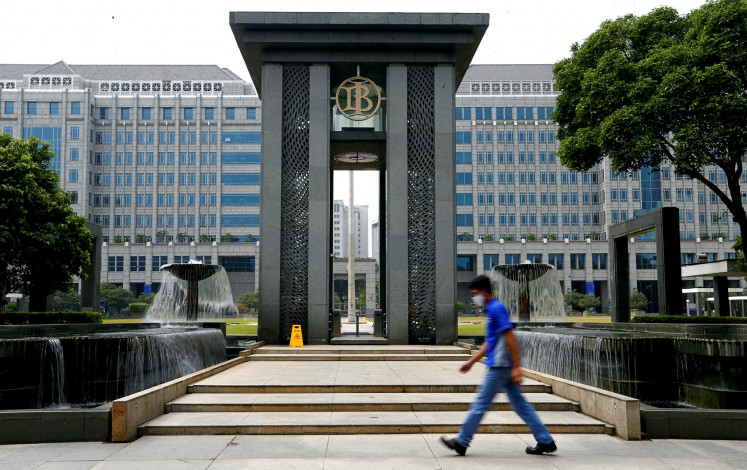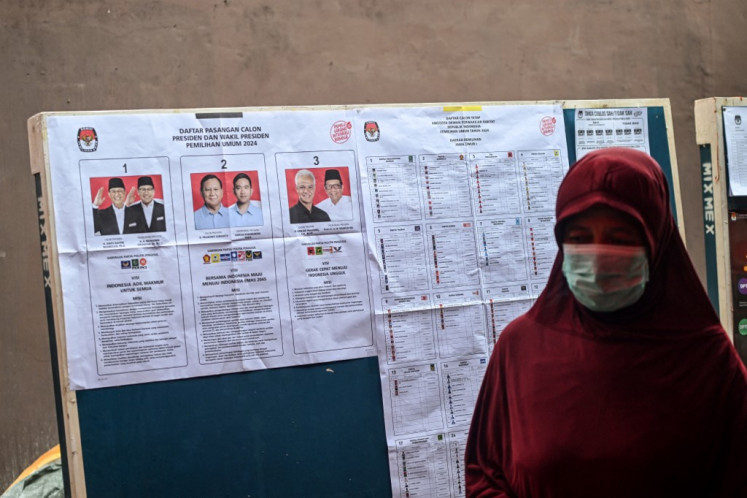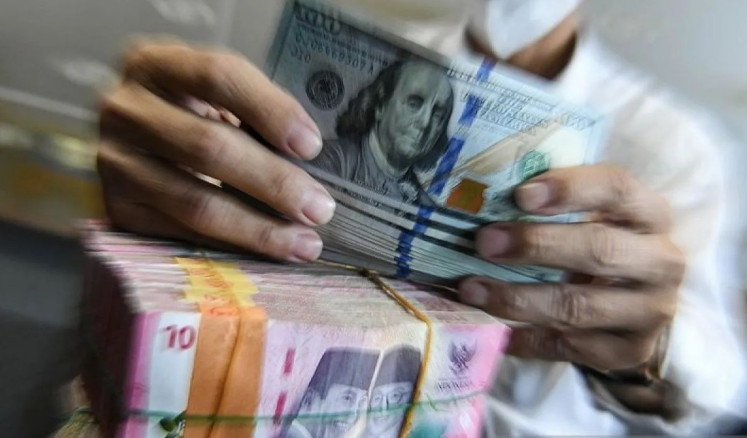Popular Reads
Top Results
Can't find what you're looking for?
View all search resultsPopular Reads
Top Results
Can't find what you're looking for?
View all search resultsBalinese usher in Chinese New Year
A group of women in traditional Balinese attire lined up carrying offerings of fruit, cake and meat on their head
Change text size
Gift Premium Articles
to Anyone
A
group of women in traditional Balinese attire lined up carrying offerings of fruit, cake and meat on their head. Excited children accompanied them, carrying red lanterns decorated with Chinese characters, while men carried long red flags and bamboo poles.
They walked together, accompanying the performance of the dynamic Chinese lion dance (barongsai) amid the deafening beating of drums, cymbals and gongs, which is believed to scare away evil spirits.
Leaving the Vihara Dharmayana temple in Kuta, the procession paraded around the Kuta area and passed four intersections circling Jl. Blambangan, Jl. Kalianget and Jl. Raya Kuta.
At each intersection, they stopped to perform prayers, while the five barongsai danced around the offerings they had already prepared.
The event's committee ritual of placing the offerings in the middle of intersections was new for Chinese New Year celebrations, committee member Adi Dharmaja said Saturday.
"This year, we decided to hold the ritual after getting permission from banjar *traditional Balinese neighborhood organization* residents. We gave offerings to respect what we call neglected spirits, which, we believe, congregate around intersections," he said.
The belief bears striking similarity with one held by Balinese Hindus, who believe that road intersections are portals connecting the seen and the unseen. Balinese Hindus regularly present offerings at road intersections closest to their houses.
As the barongsai continued, people began to flock to the temple, waiting to perform New Year's eve prayers.
The Dharmayana temple, formerly named Leeng Gwan Bio, was built around the 1800s and usually draws thousands of adherents who come to perform prayers during Imlek (Chinese New Year).
The temple was built by adherent of Tri Darma, literary three paths, a religious belief that amalgamates Buddhism with Confucianism and Taoism.
"We perform the prayers to welcome the return of the gods, which we ushered to heaven a week before the celebration, and wish for a better year ahead," priest Thio Tjin Bun said.
"We now welcome the year 2561, or the Year of Tiger," he said.
According to the priest, the condition of the Year of Tiger would affect people born under the shio (Chinese zodiac) of tiger, monkey, snake and pig, saying they may not have good health and finance.
The festive mood of Chinese New Year was also seen at the Griya Kongco Dwipayana temple in Tanah Kilap, South Denpasar, on Sunday, as people come in and took turns to pray.
Temple priest Ida Bagus Adnyana said the temple was packed with the faithful during New Year's eve and saw still more people coming throughout the first day of the new year.
Canggu resident Ketut Widi and her husband Endang Gunawan arrived early on Sunday at the Griya Kongco Dwipayana to pray.










